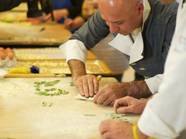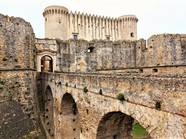As Matera ends its term as the 2019 European Capital of Culture, focus now shift towards Parma, the 2020 Italian Capital of Culture. The Emilian town has prepared an exciting program to share the region’s rich and varied culture with the world. An occasion to showcase the area’s food, art, history, music, but also to bring forward innovation and development by renovating historical venues, promoting new sustainable practices, and encouraging entrepreneurship and investments.
“Environmental themes, cultural and gastronomic initiatives, shows, debates, exhibits and the discovery of the territory...that’s how we became the 2020 Italian Capital of Culture,” announces Federico Pizzarotti, the Mayor of Parma, sharing his vision to “become a model for future Capitals of Culture, by interlacing the history, traditions and culture of a city that exemplifies Italian excellence but also wants to be a European city.”
The inauguration of Parma’s 2020 program will kick off with an official 3-day inauguration on January 11, 12, and 13, amidst exhibition openings, presentations, institutional events, and of course concerts held in the city’s prestigious theatres.
Saturday January 11th will bring the opening of “Noi, il Cibo, il nostro Pianeta: alimentiamo un futuro sostenibile” (Us, food, our planet: feeding a sustainable future), an exhibit produced by the Barilla Center for Food and Nutrition in collaboration with National Geographic Italia to promote the culture of food sustainability and champion good environmental practices. Held at Galleria San Ludovico and Portici del Grano, the show will be open to the public through April 13, 2020.
In the afternoon, the People of Parma Parade will run through the streets of the city’s historical center, followed by a speach by Mayor Pizzarotti and the launch of the Parma 2020 official jingle composed by songwriter and pianist Raphael Gualazzi. Finally, the evening will conclude with two musical performances: Mozart’s Gran Partita and Niccolo Paganini’s 24 Caprices for Solo Violin.
On January 12, Teatro Reggio will host the institutional opening ceremony of Parma Italian Capital of Culture with the participation of the President of the Republic Sergio Mattarella, who sent the city his best wishes during his traditional end-of-the-year address to the nation, stating that “culture is a great driver of quality of life and solidifies a country’s social fabric.”
Afterwards, “Time Machine: seeing and experimenting time” will open at Palazzo del Governatore, a multimedial exhibition conceived by Michele Guerra, curated by Antonio Somaini with Eline Grignard and Marie Rebecchi, and produced by the Solares Foundation for the Arts alongside the municipality of Parma, which reflects on the role of the media in influencing our perception of time and space throughout history and today. The opening will be followed by a representation of Giacomo Puccini’s Turandot in the historical Teatro Regio.
Finally, on the 13th of January, the name day of Parma’s patron saint, Sant’Ilario, local museums and cultural venues will adopt longer opening hours to give everyone a chance to partake in the town’s cultural offerings. Furthermore, the “Voyage through the golden city” initiative will provide visitors with the opportunity to experience Parma as narrated by its protagonists in 10 historically significant venues in an original and interactive enactment of the city’s history from antiquity to today.
It will then be time for the opening of a third exhibit titled “Parma and La Gazzetta, news, culture, arts, sports: 285 years of journalism” dedicated to the local newspaper, which has been covering news and recording the area’s history since 1735. And, of course, the day will once again end with a concert, an interpretation of Gioachino Rossini’s Petite Messe Solennelle.
Three intense days, jam-packed with initiatives to set the stage for an exciting year ahead.
For more information visit the Parma 2020 website.







































